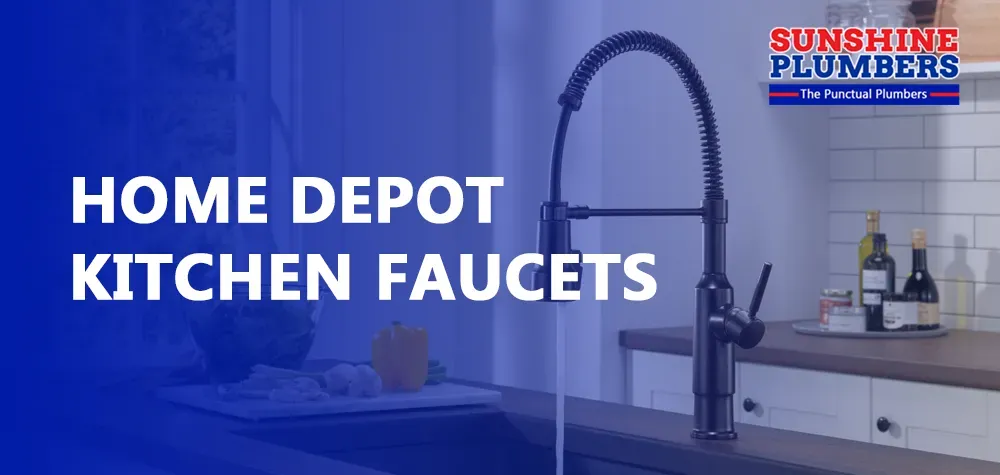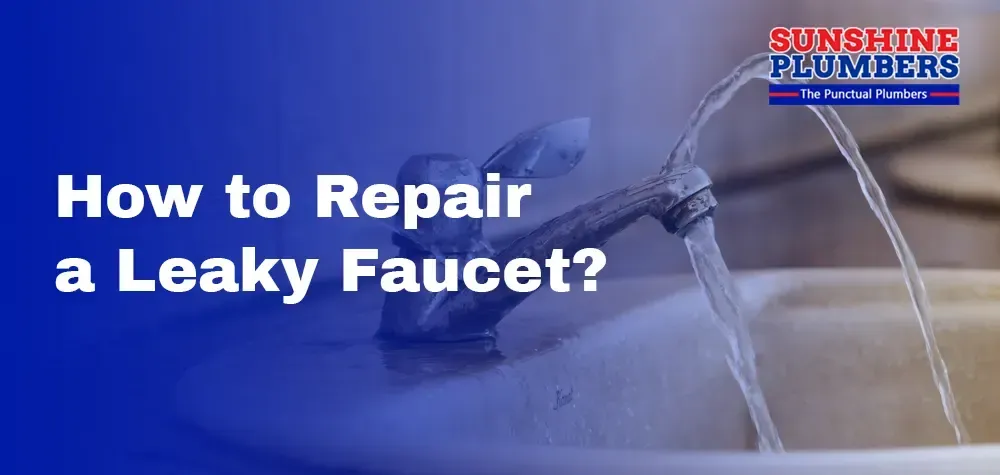How to Repair a Leaky Faucet Effectively?
Are you tired of the constant drip, drip, drip of a leaky faucet keeping you up at night? Don't let a minor annoyance turn into a major plumbing problem. Learning how to repair a leaky faucet is a valuable skill that can save you time, money, and frustration. In this comprehensive guide, the plumbing experts at Sunshine Plumbers will walk you through the steps to diagnose, troubleshoot, and fix a leaky faucet like a pro.
Diagnosing the Problem
Before diving into the repair process, it's crucial to accurately diagnose the issue with your leaky faucet. Understanding the type of faucet you have and pinpointing the source of the leak will guide you in choosing the most effective repair method. Here's how to go about it:
Identify the Faucet Type:
Faucets come in various styles, but the four primary types are compression, cartridge, ball, and ceramic disc. Each type operates differently and may have unique components that require specific repair techniques. To identify your faucet type, examine its design and handle mechanism. Compression faucets feature separate hot and cold handles that require multiple turns to control the water flow. Cartridge faucets have a single lever handle that moves up and down or side to side to adjust water temperature and flow. Ball faucets have a single lever handle attached to a rounded ball-shaped cap. Ceramic disc faucets feature a single lever handle that moves back and forth and may have a cylindrical or disk-shaped body.
Locate the Source of the Leak:
Once you've determined the type of faucet you have, the next step is to locate the source of the leak. Begin by turning off the water supply to the faucet to prevent any further leakage during the repair process. Then, disassemble the faucet handle to access the internal components. Depending on the faucet type, this may involve removing screws, caps, or decorative covers. Once the handle is removed, inspect the faucet for signs of wear, corrosion, or mineral buildup. Common areas to check for leaks include the spout, handle, base, and connections to the water supply lines.
Inspect Internal Components:
With the faucet handle removed, carefully examine the internal components for any visible signs of damage or deterioration. In compression faucets, check the rubber washers located at the bottom of the valve stem for wear or compression. Cartridge faucets contain a cartridge assembly that controls water flow and temperature; inspect the cartridge for cracks, chips, or mineral deposits that may be causing the leak. Ball faucets feature a ball assembly with rubber O-rings and springs that may wear out over time; inspect these components for signs of damage. Ceramic disc faucets contain ceramic discs that control water flow and may develop cracks or chips over time; inspect the discs for any visible defects.
By systematically diagnosing the problem and understanding the type of faucet you have, you'll be better equipped to proceed with the appropriate repair steps. Remember to take your time and be thorough in your inspection to ensure a successful faucet repair. If you're unsure about any aspect of the diagnosis process or encounter difficulties, don't hesitate to seek professional assistance from the experts at Sunshine Plumbers.
Troubleshooting Common Issues
Once you've identified the type of faucet and pinpointed the source of the leak, it's essential to troubleshoot the problem thoroughly. Leaky faucets often stem from worn-out washers, damaged O-rings, corroded valve seats, or faulty cartridge seals. Addressing these issues promptly can help prevent further damage and water wastage. Here's how to troubleshoot and repair common faucet problems:
Repairing a Compression Faucet:
Compression faucets are classic fixtures found in older homes and are typically straightforward to repair. To begin, shut off the water supply and disassemble the faucet by removing the handle and escutcheon plate. Utilize a wrench to loosen the packing nut and extract the stem assembly. Inspect the rubber washer at the base of the stem for signs of wear, tear, or deformation. If the washer is damaged, replace it with a new one of the same size and shape. Reassemble the faucet, ensuring all components are snugly secured, and turn the water supply back on to test for leaks.
Fixing a Cartridge Faucet:
Cartridge faucets, common in modern homes, feature a cartridge assembly responsible for regulating water flow and temperature. To repair a leaky cartridge faucet, start by removing the handle and cartridge retaining clip. Extract the cartridge carefully and inspect it for any visible damage, such as cracks or mineral deposits. If the cartridge is compromised, replace it with an identical one. Reassemble the faucet, ensuring all parts fit snugly, and turn on the water supply to check for leaks.
Repairing a Ball or Ceramic Disc Faucet:
Ball and ceramic disc faucets are more intricate and may necessitate specialized tools for repair. Begin by removing the handle and spout to access the internal components. Inspect the ball assembly or ceramic discs for signs of wear, deterioration, or mineral buildup. If any components are damaged, replace them accordingly. Reassemble the faucet meticulously, ensuring all parts are correctly aligned and tightened. Turn on the water supply to verify that the leak has been successfully addressed.
If you encounter challenges during the troubleshooting process or are unsure about the necessary repairs, don't hesitate to seek guidance from the experts at Sunshine Plumbers. Our professionals have the knowledge and expertise to tackle a wide range of faucet issues efficiently, ensuring your plumbing fixtures function optimally and free from leaks.
Preventing Future Leaks
After addressing a leaky faucet, it's crucial to implement measures to prevent similar issues in the future. Regular maintenance plays a key role in extending the lifespan of your faucet and avoiding costly repairs. Here are some preventive steps you can take to keep your faucet in top condition:
- Clean Aerators: Sediment and mineral deposits can accumulate in faucet aerators over time, leading to reduced water flow and potential leaks. Periodically remove and clean the aerator to ensure unrestricted water flow and prevent buildup.
- Lubricate Moving Parts: Lubricating the moving parts of your faucet, such as handles and cartridges, helps prevent friction and wear, reducing the likelihood of leaks. Apply a small amount of silicone-based lubricant to keep these components functioning smoothly.
- Check for Leaks: Regularly inspect your faucet for any signs of leaks or drips. Even minor leaks can worsen over time and lead to water wastage and increased utility bills. Addressing leaks promptly can help prevent further damage and costly repairs.
- Professional Maintenance: Consider scheduling regular maintenance checks with a professional plumber from Sunshine Plumbers. Our experts can perform thorough inspections of your plumbing fixtures, identify potential issues early on, and recommend preventive measures to keep your faucets leak-free.
By incorporating these preventive maintenance practices into your routine, you can extend the lifespan of your faucet and minimize the risk of future leaks. Should you encounter any issues beyond your DIY capabilities, don't hesitate to reach out to Sunshine Plumbers for
professional assistance. Our team is here to help keep your plumbing system in optimal condition, ensuring a reliable and efficient water supply in your home.




